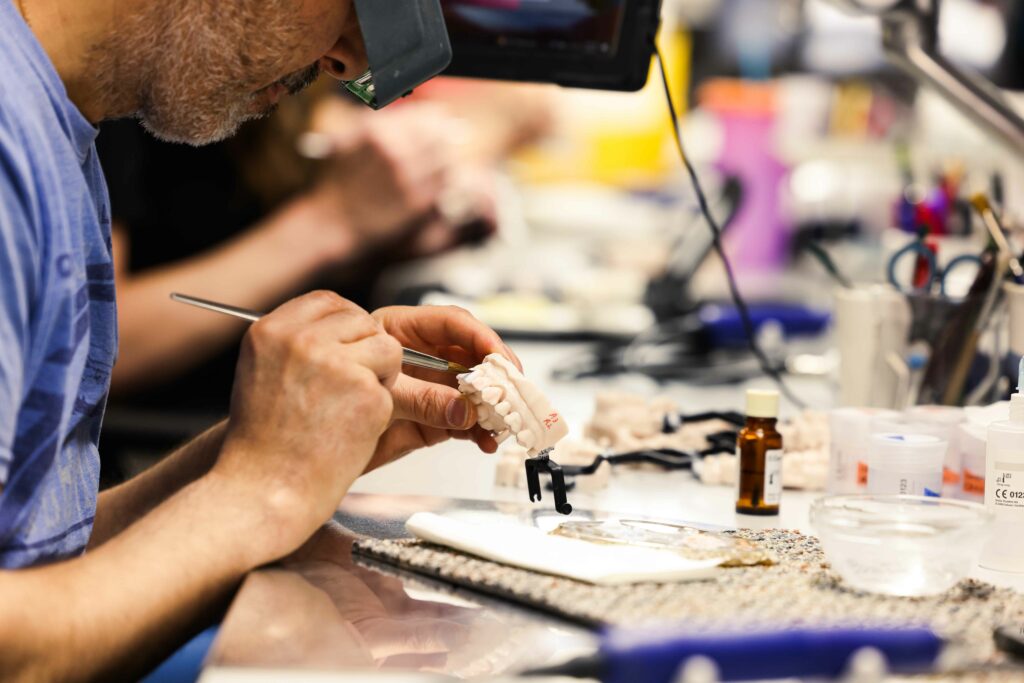Digital Dentistry’s Impact on Dental Labs. Digital dentistry uses tools like intraoral scanning to improve operations rather than relying on labor-intensive methods and tangible materials. Technology makes it easier to carry out treatments and offer premium dental appliances. These are some of the ways that digital dentistry is changing the dental lab business:
Better Communication
Dentists can keep labs up to date on patient care plans using digital communication tools. For dental lab review, your practice can send digital impressions, X-rays, and case directions to a safe website. The lab gives you a digital question so that you can review and ask for changes if there are problems with the bite alignment, margin lines, or color choices.
Cloud-based management tools facilitate collaboration between dental labs and dentists. To create the appropriate restoration devices, an expert will ask for additional pictures if the scans aren’t good enough. Many digital lab systems let dentists know when they get, design, or accept a scan. This cuts down on the number of calls or emails that need to be sent back and forth.
Accurate Designs
When a dental lab uses intraoral cameras, it gets 3D pictures of the teeth and structures around them, which makes the work more accurate. Before designing the devices in the form of crowns, bridges, and implants, these tools might find problems like small holes or surface flaws. The digital workflow system sends data to a lab after scanning a patient’s mouth. This system gives workers the exact information they need to make the prosthesis.
To create dental appliances that meet exact specs, computer-aided technology uses precise milling machines and 3D printers. Because it enables all parts to fit together regularly, making uniform devices, this feature is appropriate for patients who need full-mouth reconstructions. Labs can avoid having to redo repairs, which takes time and money, because digital prints help improve accuracy.
Simplified Tasks
The process of scanning, designing, and making dental appliances is easier when they are done online. Instead of relying on physical models, experts send the data to computer-aided design software to create it. A different piece of software can be used to create the prosthetic repair after designing it. With a milling machine, labs can make personalized limbs without having to do the modeling by hand, which can take a long time. The system instantly saves notes, designs, and pictures to make things easier. The system makes it simple to access and review files quickly, which makes communication better.
Comfortable Fit
To create oral devices that fit well, dental labs can take digital images of the teeth’s margins, contacts, and occlusal surfaces. Based on the original scans, technology lines all parts of full-arch bridges and implant-supported devices, such as crowns, abutments, and implants. Some systems let your patients try on veneers virtually or 3D-printed, so they can see how the shape and look look before the final production. Problems that happen because of grinding or an uneven bite can also be checked out with some tools. This advantage means that labs don’t have to remake or reline the dental appliances to make them fit the patient’s mouth.
Reliable Devices
For the fabrication of dental devices, 3D printers use a range of materials, such as ceramic, resin, and metal alloys. Technicians will carefully stack the materials to create a strong, long-lasting finish. Dental labs can use computer-aided tools to create prosthetics that fit the shape and curves of a patient’s mouth, protecting the teeth and soft tissues in the process. Some labs use computer design tools to test if the crown or device can withstand the force of chewing.
Work With a Qualified Dental Lab
If you’re a doctor who needs good dental implants, metal frames, dentures, and other things, you should look for a good lab. These people use current technology to make dental appliances that are correct, last a long time, and are comfortable for your patients. Call an honest lab right now to send digital pictures or find out more about the process.
